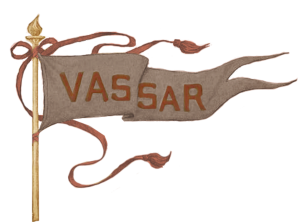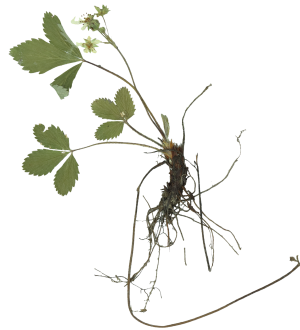1903 - 1961
Mary Virginia Heinlein was born in 1903 in Bridgeport, Ohio.
She must have liked her town. She insisted on going to its
public schools, against the preference of her family for pri-
vate ones. Years later she could bring generations of Bridge-
port people alive for us with her reminiscences. Or one might
hear her and an old neighbor from home telling over with relish
all the institutions of higher learning in their native state.
Perhaps these steady ties with the place she first knew had a
share in her passion for authenticity, in the richness and sub-
stance of her experience of the wide world.
It was in Bridgeport that the theatre took hold of her. She
saw all the plays that Chautauqua on its circuit and stock
companies on their tours brought to her part of the Ohio Valley;
and early in life she began to find her way backstage to talk
with the players. For her own part, this theatre-goer, who was
also getting to be well-read, initiated her playmates into many
dramatic ventures.
So, when she came to Vassar College in l923 to enter the Junior
class, after two years at Ohio State University, it was natural
that her teacher, Winifred Smith, should be struck by her intui-
tive and vivid understanding of Elizabethan drama, unusual in
students then or now; by her quick response even to the old-
fashioned Elizabethan humor and comedy, which she could interpret
in the medium of American rural dialect and slang.
At Vassar, she chose some of the courses that Vassar Alumnae are
still talking about. One of them was Henry Nobel MacCracken's
Chaucer and the Early Renaissance. Her teacher must have seen
her then as he saw her long after. The other day Mr. MacCracken
wrote: "The chief quality of Mary Virginia Heinlein - my student,
colleague, director, and friend — was dedication to the very point
of possession. For two-score years I never ceased to wonder at
its intensity."
It was not the Vassar actors but the debaters whom she joined as
a student. Mr. MacCracken remembers this, too: "An obscure
member (as we often let a transfer be) of a brilliant class,
with no toehold in her glass mountain, she climbed to the presi-
dency of Debate Council, then the most favored of college sports
In the fall of 1925 she led her team against one from Cambridge
University, whose most notable member was Richard Austin Butler
(now Great Britain's Home Secretary). The issue was: Resolved
that modern democracies are not compatible with personal liberty
7
MARY VIRGINIA HEINLEIN (Continued)
The judges‘ award went to the English. But Mr. MacCracken
thought they found it a hollow award: "They had come to win
converts not debates; and the Vassar audience voted solidly
for Mary Virginia's side."
From Vassar Miss Heinlein went straight to the Theater Guild
School of New York. The next six years she spent in the
theatre, studying in this country and in Europe, acting in
New York and in travelling companies, trying her hand at
directing - managing. In these years she was deeply influenced
by the psychological exploration of the experimental dramatists
of the twenties; and this became one of her continuing and
developing interests.
Then came the lean years of the thirties. She went home to
Ohio, into her father's law office, and the law school of the
State University. But the fine career in the law, and perhaps
in the State Legislature, that her Vassar teachers and friends
began now to predict for her barely got under way. In l933
Sarah Lawrence College offered her an opportunity that she
could not resist: to introduce drama into its liberal arts
curriculum. It is hard for Vassar people to remember how
radical and rare such an opportunity was in those days because
Vassar's own pioneering in the Arts began early. For twenty
years in our own Department of English, students had been tak-
ing courses in playwriting and play production, and putting
their learning to the test, first in the campus dramatic work-
shop, then in the Poughkeepsie Community Theatre and finally in
the Experimental Theatre. By the time Miss Heinlein returned
to Vassar the Division of Drama had been established. She came
in 1942 as Professor of Drama and Director of the Experimental
Theatre.
She brought with her a clear vision of what the education of
women should be, and of the place of the arts in this education
Her own words give the best statement of her goals as a teacher
Our teaching philosophy is sensible and simple.
We believe that a student's status is a dignified
one, comparable to a profession, and that the
student's chief business is learning. Since all
things change and man's wisdom is finite, the
important thing for the student to learn is hpw
to learn so that her experience here may be the
start of an ever continuing process of self-education.
We teach, therefore, techniques of learning and
hope the student acquires the taste for constant
exploration.
8
MARY VIRGINIA HEINLEIN (Continued)
Our goal is the student's independence of us, an
independence based on the genuine confidence which
comes from knowing that one has a reasonable under-
standing of oneself and the ability to do useful
work, and on her realization that final responsibility
for her education as well as for her direction in life
rests upon herself alone.
We believe, also, that for some individuals the practice
of an art is an integrating and truly educating process,
demanding, as it does, the involvement of the whole
personality and the constant searching and testing of
oneself, and calling at the same time for the utmost
flexibility, originality, and spontaneity, and the
most rigorous self-discipline, organization, and order.
We believe that drama furnishes proper substance for the
students‘ meditation, dealing, as it does, with the most
important question affecting man, the meaning of his own
existence; and that it presents to the mind, as do the
myths, rites and dreams from which it comes those symbols
and images the contemplation of which leads the human
spirit toward its true and proper development.
This is not a definition of permissive teaching, and Miss
Heinlein's students did not have an easy time of it. "She
behaved," one of them says, "As if our naivete were a fault
we could shed if we chose; and she chose that we get rid of
it fast." A young woman might kick hard against the pricks -
hard enough for all to see. But ten years later she would
write that Miss Heinlein was her great teacher, the first
person she had ever known who showed "intellectual passion."
She would say that in having to submit to the "authority of
accuracy and precision"; to subject the development of her
ideas to the rigor of logic, to suffer the explorations of
her own mind, she was getting her introduction to "a great
science, in the fine old Greek sense of the word."
We all had a share in Miss Heinlein's educational enterprise,
evenififlfie of us who never appeared on her stage, or lent the
resources and insights of their own professions to her produc-
tions. We were her audience, whom she made feel as essential
to the theatre, between curtain—up and curtain-down, as her
cast. Some of us had to take it on faith, now and then, that
the play before us was, in her words, "so good that it needed
doing." But in the end every one of us had his own treasury
of satisfying memories of her theatre; perhaps the power and
the insights in her production of The Tempest; perhaps the
9
MARY VIRGINIA HEINLEIN (Continued)
sights and sounds of young women, so moving, against the
stylized sets of The Mother of Us All; perhaps the perfection
of The Blood Wedding, that “brooding folkplay of simple
peasants, devoid of all decor but mere sunlight on plaster
walls."
All those years Miss Heinlein took her part in the national
and international affairs of the theatre. She held office in
the American National Theatre and Academy, the State and
National Theatre Conferences, the American Educational Theatre
Association, the American Society for Theatre Research. She
was a delegate to Conferences of the U. S. Commission for UNESCO
to the National Theatre Assemblies. Her paper for the Inter-
national Congress of Theatre Scholars and Historians held in
Venice in '57 was published in German by the Institute for
Theatre Science of the University of Vienna, and in other
languages. She gave lectures on the drama, wrote articles and
reviews, made reports for Foundations. She found time to
write for children a play called The Panda and the Spy, first
given at Vassar in 1943, and still showing in children's
theatres. She visited theatres around the world. Now and
then, by way of a holiday, yet keeping her hand in, she would
spend a summer in one of the stock companies. In collaboration
with Mrs. Stavrides, she had almost completed a translation of
the memoirs of Andre Antoine, founder of the Theatre Libre
in Paris.
But important as it was, her public role has for her friends
and colleagues far less reality than her warm and generous
personality, with its unique combination of wit and wisdom
which responded so directly to the authentic, yet was so
quick to unmask the false and deflate the pretentious. It
has less reality than the gallant, playful and truly comic
spirit that set our mundane concerns in a proper perspective.
On December 20, 1961, Mary Virginia Heinlein taught her last
class. She died on Christmas Day.
Josephine Gleason
Clarice Pennock
William Rothwell
James Bruce Ross, Chairman
XV 388-390

